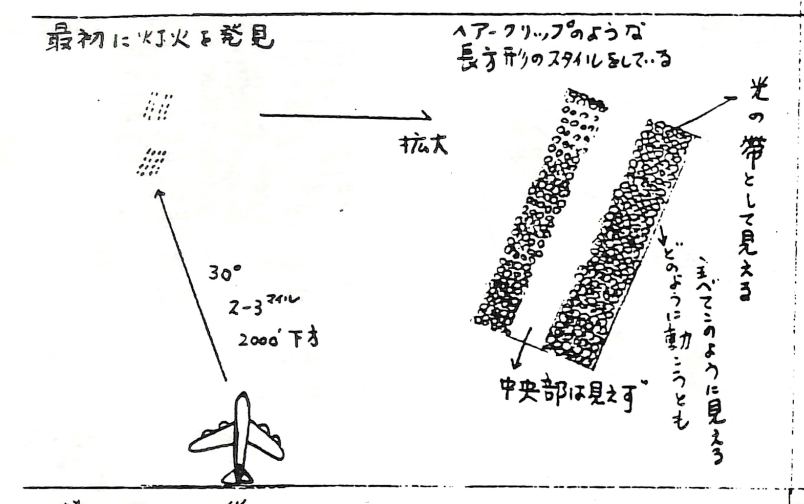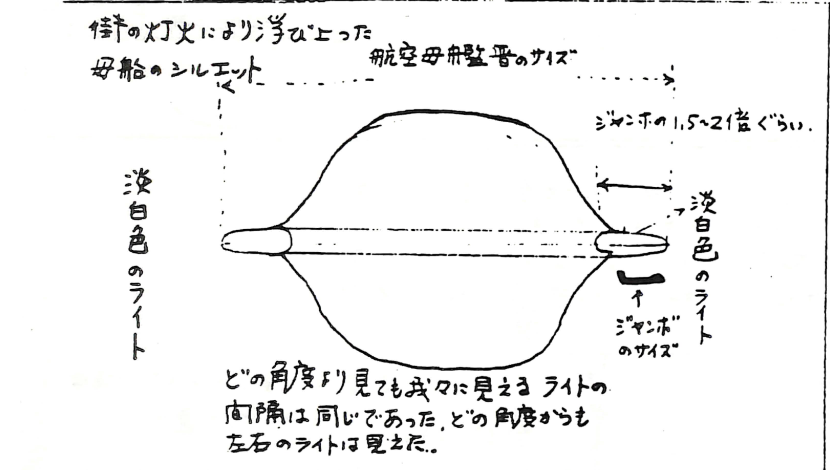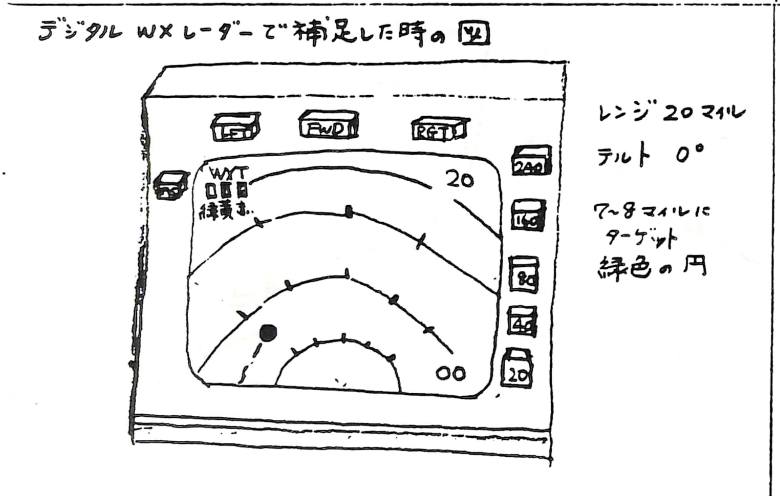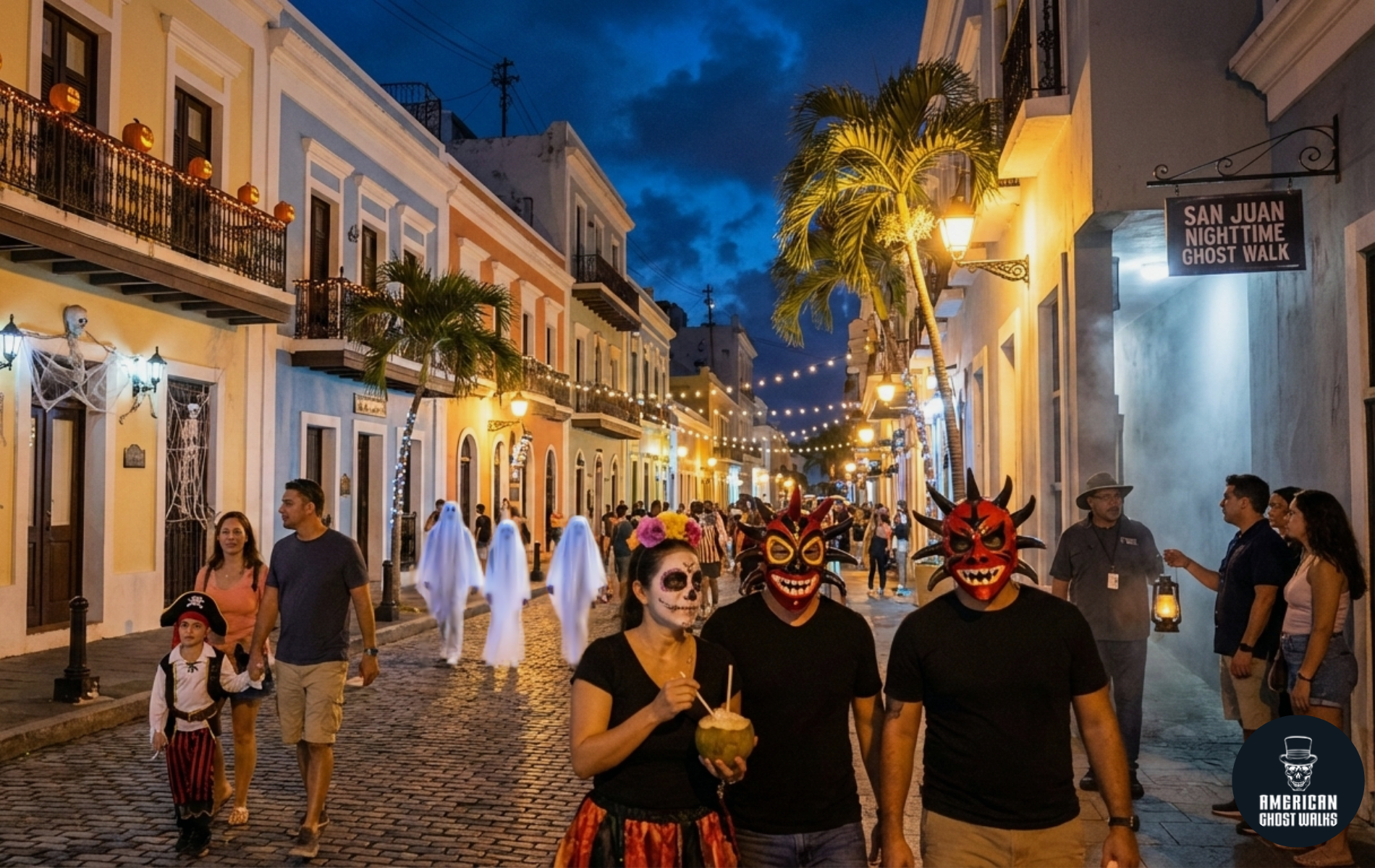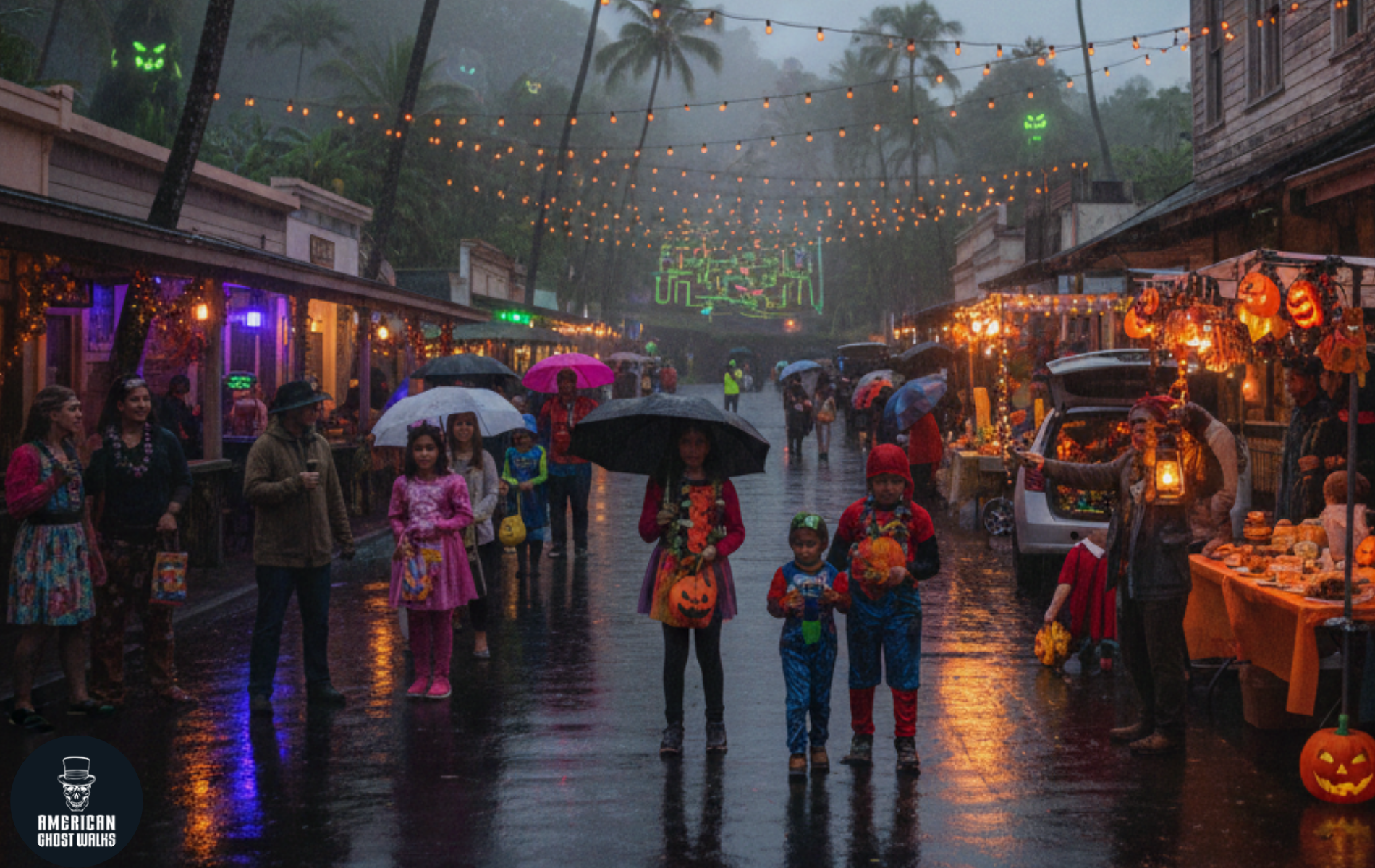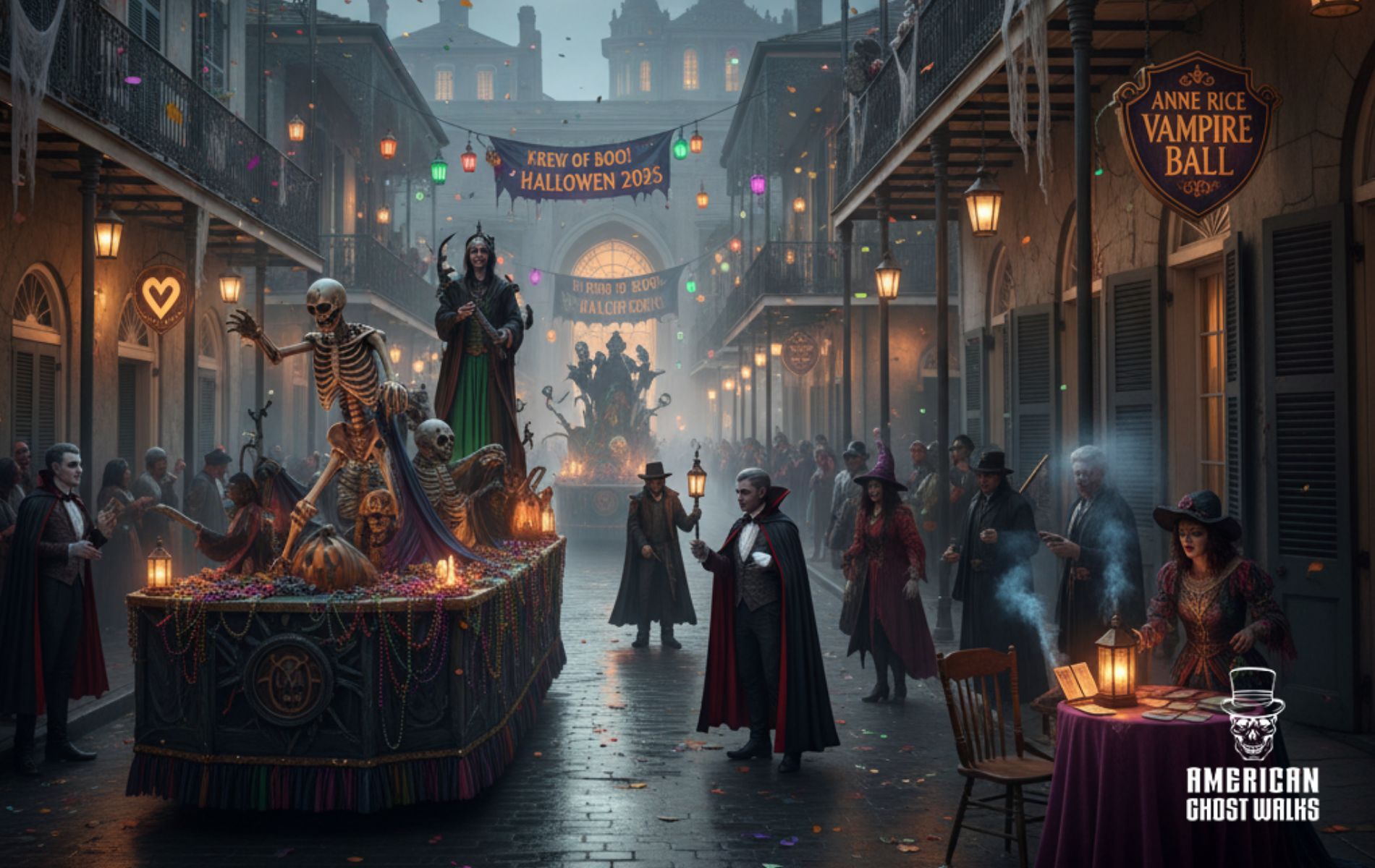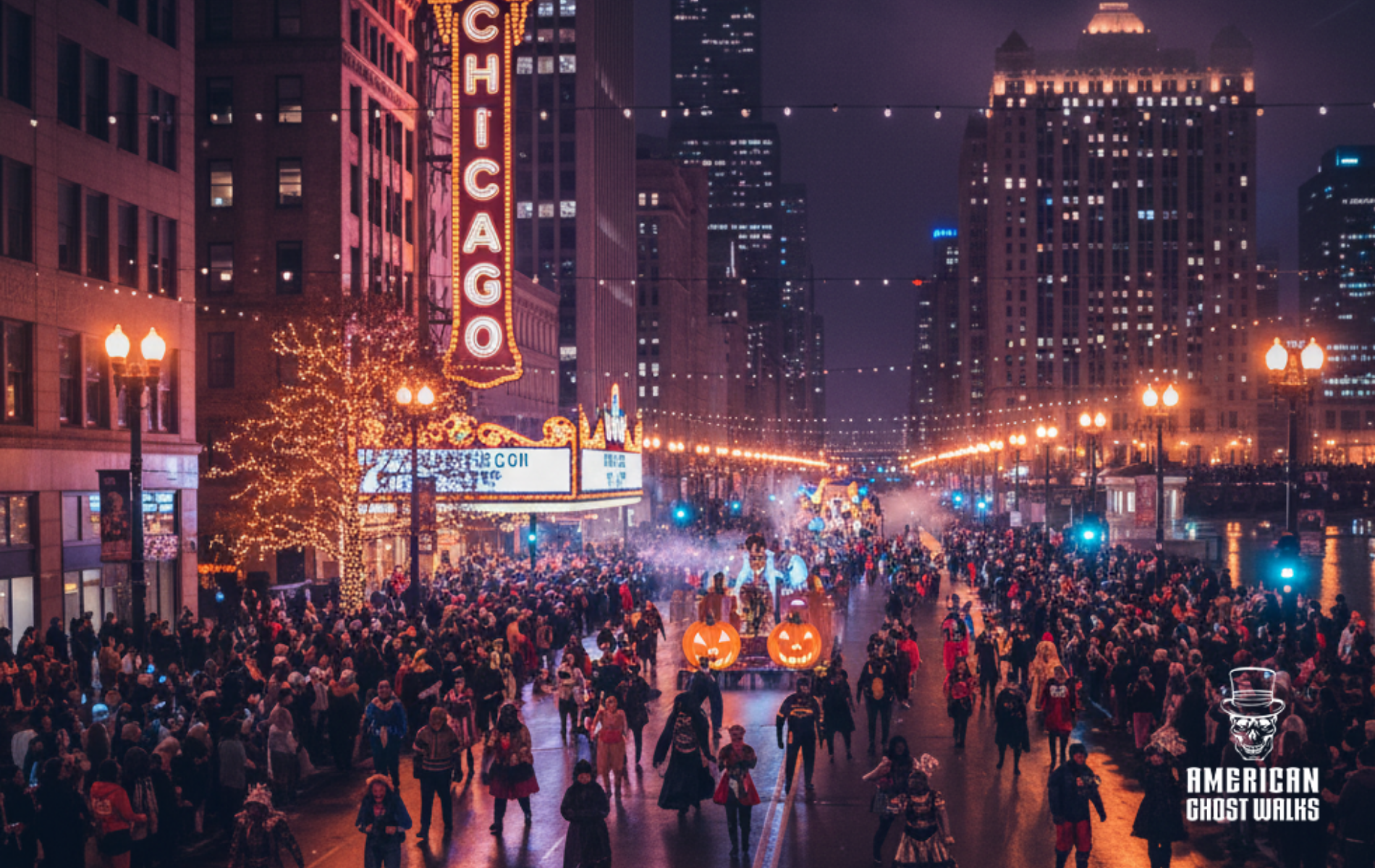Haunted Alaskan Skies: 1986’s JAL1628 UFO Encounter
JAL1628 Becomes the Most Famous UFO Sighting in Alaska
On November 17, 1986, a routine Japan Air Lines 747 cargo flight over Alaska referred to as Flight 1628 (or just JAL1628, or JL1628) made UFO history when it encountered three unknown crafts in its airspace. What distinguishes this sighting is not only the three eyewitness accounts of the pilots and crew, but the corresponding radar returns that were simultaneously tracked by three air traffic controllers on the ground.
For nearly an hour, three unidentified craft, shadowed the 747, performing seemingly impossible maneuvers. Veteran aircraft personnel saw them. Different radar scopes tracked them. And once they disappeared, the events and the resulting cover-up ignited a controversy that still burns to this day. The JAL1628 incident would make international news for months and become Alaska’s best-known UFO sighting.
JAL1628’s Initial Encounter with Two Small Crafts
JAL1628 was flying from Paris to Tokyo with a load of Beaujolais wine, making a scheduled transit across Alaska. At approximately 5:11 PM Alaska time, while cruising at 35,000 feet near Fort Yukon, Captain Kenju Terauchi and his crew, First Officer Takanori Tamefuji and Flight Engineer Yoshio Tsukuba, first noticed strange lights in the dark sky. Two amber-colored lights – “flying parallel” to the 747 – suddenly sped toward the plane, startling the crew. Captain Terauchi, a JAL pilot for 29 years (and a former fighter pilot), radioed Anchorage Air Route Traffic Control to report the unidentified traffic. FAA flight controllers could hear the concern in the Japanese captain’s voice as he described the objects “suddenly approaching very close” to his aircraft.
What unfolded next was a 50-minute aerial cat-and-mouse game that left the crew both amazed and apprehensive. Terauchi reported that the two initial UFOs maneuvered around his jumbo jet with astounding agility – “shooting off lights” and darting erratically, as if exhibiting some form of intelligence or control. The objects’ lights were described as a kind of “Christmas” display of flashing orange, green, white, and amber colors. At one point, the two small UFOs appeared directly in front of the 747’s cockpit, pacing just 500 feet ahead of the plane’s nose, which lit up the cockpit with a glow. Terauchi later mused that the smaller craft seemed to be “scouting” his plane – flying in what he called a “close formation” around the Boeing 747. He was adamant that they were not stars or planets: “they were so luminous . . . blinking, blinking . . . moving in one close formation”.
A Gigantic Mothership Emerges
Then came the most dramatic appearance: the so-called “mothership.” While the two smaller objects eventually fell back, Terauchi and his co-pilot noticed a gigantic dark shape looming off to the left. In silhouette against the moonlit evening sky, the object had a distinct shape that the captain could only compare to a surreal, flying walnut. It had a flattened oval form with bulging top and bottom – an unusual shape the pilot later sketched in a written statement. Captain Terauchi estimated this craft to be enormous – “two times bigger than an aircraft carrier” in length. Given that an aircraft carrier is about 1,000 feet long, this UFO would have been roughly the size of a city block in the sky!
The “mothership” positioned itself in a way that earthly light (from the moon) silhouetted its massive shape – that’s when he realized just how enormous it truly was. The structure had no discernible wings or tail. It seemed to be a huge, solid object with surface features or panels; Captain Terauchi described a kind of pattern on its surface and what looked like “turrets” or circular indentation. The smaller UFOs, by contrast, were primarily seen as clusters of intense lights moving in unison.
For over thirty minutes, JAL1628 was not alone in the sky. By around 5:40 PM, as the 747 approached the Fairbanks vicinity, the situation had drawn serious attention on the ground. Anchorage Center controllers were monitoring the flight closely, and the FAA had also alerted a nearby Air Force radar station (at Elmendorf AFB) to look for any unknown targets.
Finally, as JAL1628 neared the skies above Anchorage, the mysterious objects suddenly disappeared. The incident was over – leaving the JAL crew equal parts relieved and awestruck. They landed safely at Anchorage International Airport at about 6:20 PM.
UFO Encounter was Tracked on Three Radar Systems
One reason the JAL 1628 encounter drew intense attention is that it wasn’t just a “lights in the sky” tale, although professional skeptics have tried to portray it that way. Three radar systems caught glimpses of the unknown intruder. On the plane itself, during the encounter, flight engineer Tsukuba noticed a blip on the 747’s weather radar – an object directly in front of them at about 8 miles distance. That was alarming, since no other traffic was supposed to be in their airspace and weather-wise the sky was clear. On the ground, at Anchorage Air Route Traffic Control Center, at least three controllers on duty later affirmed that they briefly tracked an unknown target in proximity to JAL1628’s radar return. One controller, Carl Henley, initially thought it might be a military aircraft “shadowing” the JAL flight – not an uncommon practice during the Cold War, when Soviet spy planes were known to evade detection by quietly tagging along with civilian traffic. Henley’s supervisor even alerted U.S. Customs in case an aircraft without a transponder was trying to slip into Anchorage behind the JAL 747. For a short time, radar in Anchorage did show a second target trailing JAL1628 – and at one point, appearing almost next to it, only 5 miles away – before that target disappeared from the screen.
Simultaneously, U.S. Air Force radar at Elmendorf (just outside Anchorage) was directed to scan for the object. They, too, registered a primary return (raw radar echo) of something unidentified near the JAL flight – but it was intermittent and couldn’t be locked before it vanished off their scope. For a brief period, then, JAL1628 was being observed on three radar scopes at once: the plane’s own radar, FAA Anchorage Center radar, and military radar. This multi-source confirmation led the FAA spokesman to initially tell media that indeed an “unknown aircraft” had been tracked in the vicinity of Flight 1628. On Jan. 2nd, 1987, The Washington Post ran the headline: “UFO Sighting Confirmed by FAA, Air Force Radar; Japanese Crew Tells of Encounter Over Alaska.”
FAA Reverses Opinion on Radar Evidence
The radar evidence, however, soon became a point of contention. By early January 1987, FAA Public Affairs Officer Paul Steucke had already begun walking back the radar story. After replaying and analyzing the radar tapes, FAA officials suggested that the supposed second target might have been a “split radar image” – essentially a ghostly echo of JAL1628’s own radar return.
Could that explain the mysterious radar contact? The FAA was leaning in that direction: “The object on radar was now thought to be an accidental split image of the JAL 747 . . . a familiar radar quirk,” Steucke told reporters. The Air Force’s brief radar hit was similarly chalked up to electronic “clutter” – random interference that just happened to coincide with the pilot’s visual sighting. In short, by the end of the investigation, the official stance became: Radar found nothing solid.
Sam Rich, Anchorage Air Traffic Controller, Speaks Out
Not everyone in the FAA agreed quietly, though. Anchorage controller Sam Rich, who had been handling Flight 1628 that night, later spoke with a journalist and contradicted the public dismissal. He asserted that multiple controllers in the radar room “saw a target come and go” near the JAL flight, and that they were convinced it wasn’t just a glitch.
“All three of us thought there was a track” – in other words, a real aircraft target – Rich told the Anchorage Daily News. This internal discrepancy – controllers vs. official explanation – caused a bit of a stir. The FAA, caught off-guard by the media frenzy, quickly ordered all personnel to refer media inquiries to the public affairs office thereafter. In an internal memo, FAA managers even reminded staff that “the FAA is not in the UFO business” and that controllers should not speculate on unidentified targets publicly. It was damage control. The agency was doing what it could to wash its hands of the JAL1628 UFO Incident.
John Callahan, Former FAA Division Chief, Speaks Out
Behind the scenes, John Callahan, an FAA employee who spearheaded agency quality control efforts, was conducting his own investigation. In 2001, he finally broke his silence, revealing that he personally handled the JAL Flight 1628 case data. He compiled the radar records, voice tapes, and pilot reports and briefed FAA Administrator Admiral Donald Engen on what happened. According to Callahan, the incident was taken sufficiently seriously that a high-level meeting was convened with representatives from the FAA, Air Force, and CIA to review the evidence.
In multiple instances of televised testimony, Callahan claimed he was convinced of the extraordinary nature of the events after syncing radar data as it appeared with the audio between JAL1628 and the Anchorage control tower. According to Callahan, CIA officials took the information seriously as well, confiscating all the data and advising the assembled that the meeting “never happened.” Callahan kept a copy of the data for himself, which he eventually made public. If his account is true, it suggests parts of the government did find the radar data very interesting, even if the official line was dismissal.
Syncing the radar with communications allowed him to determine whether the radar confirmed specific UFO locations reported by Captain Terauchi. He found a match just as the tower controllers did during the events of November 17, 1986. A primary radar target appeared in the positions Captain Terauchi described. However, “radar signals were intermittent because the UFO was painted as an extremely large primary target and so the FAA computer system treated the UFO radar return as weather. Regardless, the target could be seen near the 747 off and on for thirty-one minutes.”
Radar Limitations Can Hinder Detection
John Callahan went on to say in Leslie Kean’s 2010 book UFOs: Generals, Pilots, and Government Officials Go on the Record, “Now, more than twenty years later, it’s become very clear to me that most people, including FAA controllers, really aren’t familiar with how the FAA radar system works and why all aircraft traveling through our airspace are not caught on radar or displayed on the controllers’ PVD.”
According to Callahan there are many reasons for this:
- The system and organization of the FAA are configured to identify and track known aircraft types.
- FAA equipment will not register an aircraft unless it has slowed to a speed similar to conventional aircraft.
- A UFO does not have a transponder, which by law all other aircraft do. The transponder helps controllers locate and identify air traffic.
- If an object is too big, the radar reads it as weather.
- If an object is too fast, the radar won’t have time to pick it up before it’s out of range.
- If something is hovering, it often doesn’t show up, or may be a perceived as something too small to warrant concern.
The limitations of radar are vast. To be detected by radar, aircraft needs to fit into a particular Goldilocks Zone. Spy planes, particularly stealth aircraft take advantage of these limitations to avoid radar detection.
Jim Derry, Former Head of FAA Alaska, Speaks Out
Three FAA staff members interviewed the captain and crew of JAL1628 right after the events of November 17, 1986. One of them Jim Derry has come forward to vouch for their sincerity. “They didn’t make this up. Something happened that scared them,” he told The Unexplained Files TV show in 2014. “The first officer and the flight engineer acted more like they were in shock. The captain was extremely definitive with his descriptions and was breathing fast, was talking fast. This will always remain in my memory because . . . how often do you get to stand on the periphery of an event that is totally unexplained, but has some real concrete data as to the fact that there was something out there?”
In 2020, Derry told The Alaska Triangle, “Their palms were very sweaty, pupils were very dilated . . . They were very, very believable . . . The other investigator and I rolled our eyes at the time when we saw the sketches because it seemed really way out. But after we saw that it showed up on radar we weren’t quite as skeptical about it.”
Lost in Translation or Discrepancies in Crew Testimony?
There have been many allegations that the testimony of the crew of 1628 does not support the testimony of the pilot, Captain Terauchi. Skeptical statements reduce the sightings of the first officer and the flight engineer to mere lights in the sky. Even the usually pro-UFO Debrief’s analysis concludes, “What the tale of Japan Airlines 1628 boils down to is the eyewitness testimony of a single witness. Multiple other trained observers either saw nothing or reported ‘lights’ that could have been stars or planets.”
A more critical look at the transcripts of the interviews reveals something else entirely. Although FAA employees Jim Derry, Jack Wright, and Ron Mickle interviewed the pilot and crew within hours of the incident and reported no red flags. The FAA called in the JAL1628 personnel again for a second interview in January of 1987. At some unspecified point, Captain Kenju Terauchi provided detailed sketches and lengthy written testimony in Japanese that was later translated into English.
Inconsistencies in Interview Technique
For the second interview, Captain Terauchi was interviewed by Dick Gordon. First Officer Takanori Tamefuji and Flight Engineer Yoshio Tsukuba were interviewed by Peter Beckner. At Captain Terauchi’s interview two interpreters attended one from JAL and one from the FAA. Curiously, only the FAA interpreter was present for Tamefuji’s and Tsukuba. Other disturbing inconsistencies in interview technique become evident early in the interview transcripts. While Tsukuba was allowed to his native Japanese during his interview upon his request, the other two stumble through their interviews in broken English.
Unfortunately, Terauchi and Tamefuji, who had the best vantage points during JAL1628’s UFO encounter are the least comprehendible. Tsukuba, who was sitting further back in the plane and occupied with flight calculations, has the clearest testimony. One can't help but wonder if this was by design. The mess of leading questions and halting unintelligibles makes copilot Tamefuji’s testimony particularly difficult to assess.
What Did the Flight Crew of JAL1628 Really See?
One thing is clear – none of the witnesses describe solitary, ambiguous lights in the sky. Tamefuji says, he saw “two small aircraft” and “too many lights” that were “so luminous.” Regarding the mothership, Tamefuji said, “so I couldn’t find what captain saw . . . I looked all over the place . . . And the captain was in the way . . . and ah, some ah, pillar, window pillars . . . I couldn’t see well, but some hum, hum this . . . this is not exact picture, but ah, like similar like aircraft is (unintelligible).”
Although Tsukuba from his position inside the plane couldn’t see the so-called mothership at all, he did describe sighting the initial craft. “The lights in front of us were clusters of lights . . . I think they were made of two parts . . . the lights were shaped like windows of a passenger aircraft.”
You maybe argue that Captain Terauchi exaggerated his description of the mothership. Or you may say because he admitted to two previous sightings of aircraft he could not identify makes his testimony suspect. However, if you review the testimony carefully you most likely will not claim that the crew didn’t witness anything unusual.
Professional skeptics would claim all of this could be explained away as a misidentification of the planets Jupiter and Mars. “Too many lights” and “clusters of lights shaped like windows” don’t in any way resemble how the planets Jupiter or Mars appear or have ever appeared in the night sky.
The First Officer Turns the Tables
Nobody ever talks about this. Perhaps the most telling moment of First Officer Takanori Tamefuji’s testimony is at the end. Tamefuji turns to his interviewer and asks, “And ah, can I ask one question?” He proceeds in an attempt to clear up a misrepresentation of the event he’s noticed, “Ah, how should I say, but some personnel from military said this was a weather interference . . . Ah, on the radar . . . But ah, it was clear sky, so … there’s no possibility of weather interference.” Beckner dutifully promises to get back to Tamefuji and sends him on his way. This could be an indication that Tamefuji perceived some obfuscation on the U.S. military’s part.
Popular American media has muddied the waters as well. Most egregious was the JAL1628 incident segment on The Alaska Triangle TV series, which didn’t even get the date of the UFO encounter right. Dramatic recreations of the event also exaggerate the how the craft appeared to the JAL1628 crew. The ships were in the darkest part of the sky. They were seen only in silhouette as they block out portions of the night sky. The excerpt from the Japanese TV show near the end of the video below is a closer approximation.
Terauchi is Labeled a "UFO repeater" by Skeptics
In the second round of FAA interviews Captain Terauchi and First Officer Takanori Tamefuji are first asked whether they had even seen a UFO is the past, while Flight Engineer Yoshio Tsukuba isn’t asked this at all. In retrospect, this sure seems like a transparent attempt to discredit the pilot and co-pilot.
Tamefuji didn’t provide any ammunition, but Captain Terauchi did. When asked he readily admitted to spotting objects he could not identify in the sky on two occasions. This led FAA officials and, later, professional skeptics to label Captain Terauchi a “UFO repeater.”
The FAA “UFO repeater” memo also noted that Captain Terauchi had used words like “spaceship” and “mothership” in describing what he saw – indicating he genuinely believed these encounters were craft of some kind, not just natural phenomena. He was even quoted as saying “we humans will meet them in the near future,” suggesting he felt the objects were some sort of extraterrestrial visitors. Skeptics seized on these points to argue that Captain Terauchi was perhaps predisposed to see UFOs, or even overly imaginative. Famous UFO-debunker Philip Klass scrutinized Captain Terauchi’s accounts and concluded there were inconsistencies. Klass and others pointed out that Captain Terauchi’s initial radio report on Nov 17th said one thing (he lost sight of the object during the turn), while his later recollections said another (that the object stayed with him during the turn). This suggested that Captain Terauchi may have exaggerated the story over time.
A Debunkers’ Field Day
Professional UFO skeptic Phillip Klass got the ball rolling when he simply asserted that the whole incident was down to Captain Terauchi misidentifying Jupiter and Mars and concocting an imaginative UFO fantasy. This planetary misinterpretation hypothesis was picked up by all the major newspapers. Klass went on to publish a similar allegation in the Summer of 1987 edition of Skeptical Inquirer.
In 2014 Robert Sheaffer, claimed Captain Terauchi “not an unbiased or objective observer” and stated that UFO enthusiasts had made much ado about a case that, in Sheaffer’s view, “turns out there wasn’t much to it” beyond a pilot’s tall tale. Sheaffer also questioned John Callahan’s credentials as well as the inability to corroborate Callahan’s claim that someone from the CIA tried to coverup the case. Although corroboration of CIA involvement in a coverup might be impossible if CIA agents are actually good at their jobs, in 2015, UFO blogger Paul Dean verified Callahan’s employment history at the FAA. John Callahan’s position within the FAA at the time of JAL1628 UFO incident can also now be confirmed by internal correspondence about the JAL1628 case. It also becomes clear from reading these memos that Callahan’s involvement was a thorn in the side of the FAA’s public affairs officer Paul Steucke who was doing his best to control the narrative and make this PR issue go away.
Critics also argue that inconsistencies in the crew’s accounts, lack of continuous radar confirmation, and the eventual lack of corroboration by a nearby United Airlines flight and a military C-130 (both of which reached the area after the UFO departed and saw nothing) all cast doubt on the idea that anything extraordinary occurred.
As readers, we are left with intractable he-said/he-said arguments between highly experienced witnesses and armchair analysts. The truth might lie somewhere in between or out in left field entirely.
Terauchi Suffers Consequences
Captain Terauchi’s reputation took a hit from such criticisms, but many in the UFO research community rallied to his defense. After all, his co-pilot and engineer also saw the lights. Captain Terauchi and his crew were also judged completely reliable by the FAA.
In the immediate aftermath, FAA investigators in Anchorage interviewed all three crew and explicitly reported the crew was “normal, professional, rational (and had) no drug or alcohol involvement.” In other words, they saw something up there.
Yet the situation still resulted in Captain Terauchi being relegated to desk duty for a time. Sources give varied estimates of the time he was grounded, between three months and two years. Captain Terauchi was also transferred from Anchorage back to Japan. Terauchi was later reinstated, regaining his wings.
Captain Terauchi himself, while firm in what he witnessed, remained humble. He admitted he wasn’t sure what the giant UFO was – only that it wasn’t a conventional aircraft or planet. He even joked in one interview, “If the USA or Soviet Union had a craft that huge, I can’t imagine they’d test it by having it play tag with a little cargo jet!”
For the rest of his career, Captain Terauchi mostly avoided discussing the incident publicly. But late in life, he reportedly still affirmed that the encounter was real and unexplained.
Why The Jupiter and Mars Explanation Makes No Sense
Over the years, different explanations have been proposed. The dismissal that got the most press was Philip Klass’s prosaic planetary misidentification hypothesis.
Klass argued that Captain Terauchi and the rest of the crew simply mistook bright planets (Jupiter and Mars) for UFOs. Although that evening Jupiter and Mars were visible in the southern sky, the hypothesis has been largely discredited by detailed analysis.
Dr. Richard Haines, a NASA scientist who has studied thousands of aviation sightings, points out that the UFOs were seen moving rapidly across relative positions (from 12 o’clock to 10 o’clock of the plane, and back), something no planet would do relative to a steadily flying aircraft. “There’s no way it could be a planet,” Haines said, noting also that the objects were described as very large and at close range. All three of the flight’s personnel reported seeing groups of lights not just two solitary points of light. The co-pilot Tamefuji described them as “clusters” of colored lights “swinging” in formation, which sounds nothing like a single light or two in static positions. The planetary misidentification hypothesis therefore fails to account for the dynamic, up-close phenomena that JAL1628’s crew reported.
The Legacy of the JAL 1628 Incident
Decades later, the JAL1628 UFO encounter remains a fascinating case that straddles the line between spooky mystery and sober reality. On one hand, it’s got all the ingredients of a classic X-Files episode: an experienced flight crew, an enormous craft doing impossible maneuvers, radar confirmation, alleged government cover-up, and media hype. On the other hand, it’s a real event documented by the FAA, with transcripts, radar logs, and credible people involved. This tension has made JAL1628 a touchstone in ufology and a case often cited in today’s debates about UAP (Unidentified Aerial Phenomena) in aviation.
Perhaps the greatest legacy of JAL 1628 is how it underscores the mystery that still persists around UAP. Even today, with improved radar, satellites, and cockpit cameras, pilots occasionally encounter things in the sky they cannot identify. Governments have started to take the topic a bit more seriously in recent years, openly acknowledging that there are unexplained aerial incidents (the Pentagon’s 2021 UAP report is an example).
In this climate, the Flight 1628 encounter has been revisited by aviation experts as a case study. What Flight Safety lessons can be learned? Could such an event pose a hazard and should these be investigated more rigorously? In 2023, an episode of the Flight Safety Detectives podcast even dissected the JAL 1628 incident, suggesting that future UAP reports be collected with better data so that incidents like this aren’t left unresolved.
At the end of the day, despite exhaustive inquiries, we still don’t know for sure what shadowed that Japan Airlines flight over Alaska in 1986. The official verdict was “unable to confirm object” – a fancy way of saying UFO. The case remains a whodunit of the skies. The fact remains that Captain Terauchi and his colleagues saw something that they all judged to be remarkable. “It was there, as real as the planes I fly,” Terauchi insisted.
Review the Evidence & Judge for Yourself
So what really happened? Although it’s hard to know for sure, at least in the case it appears where there’s smoke, there’s fire. This isn’t some wild tale fabricated my bored bloggers. Real aircraft personnel and actual FAA employees have gone on the record repeatedly and as publicly as they can. However, the fact that Paul Steucke, the FAA public affairs officer, was more than happy to explain this case away is more than apparent in internal correspondence. Combining the split radar return assertion with Philip Klass’s facile planetary misidentification hypothesis was the one-two punch he needed to make this happen. Newspapers published this explanation en masse. Further scrutiny of the actual documents, however, reveals the FAA failed to present a unified front on its dismissal of the case.
Today if you’d like to assess the case for yourself, you can thanks to John Greenewald of the Black Vault. He worked for 17 years to cut through government red tape and misleading denials, to find the original interviews, radar returns, and memos related to the case.
Review the complete set of 1,569 pages for free and make up your own mind.
Discover the Mystery with Alaska Ghost Tour
The JAL1628 incident remains one of the most credible and perplexing UFO encounters in history, with seasoned pilots, radar confirmation, and unanswered questions that still fuel debate today. If stories like this spark your curiosity, the
Alaska Ghost Tour offers a unique opportunity to explore the darker side of the Last Frontier. Journey through locations steeped in strange sightings, eerie encounters, and long-standing legends, as you uncover the secrets that make Alaska one of the most mysterious places on Earth.

